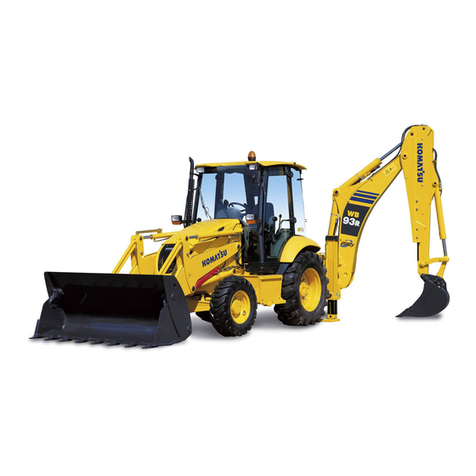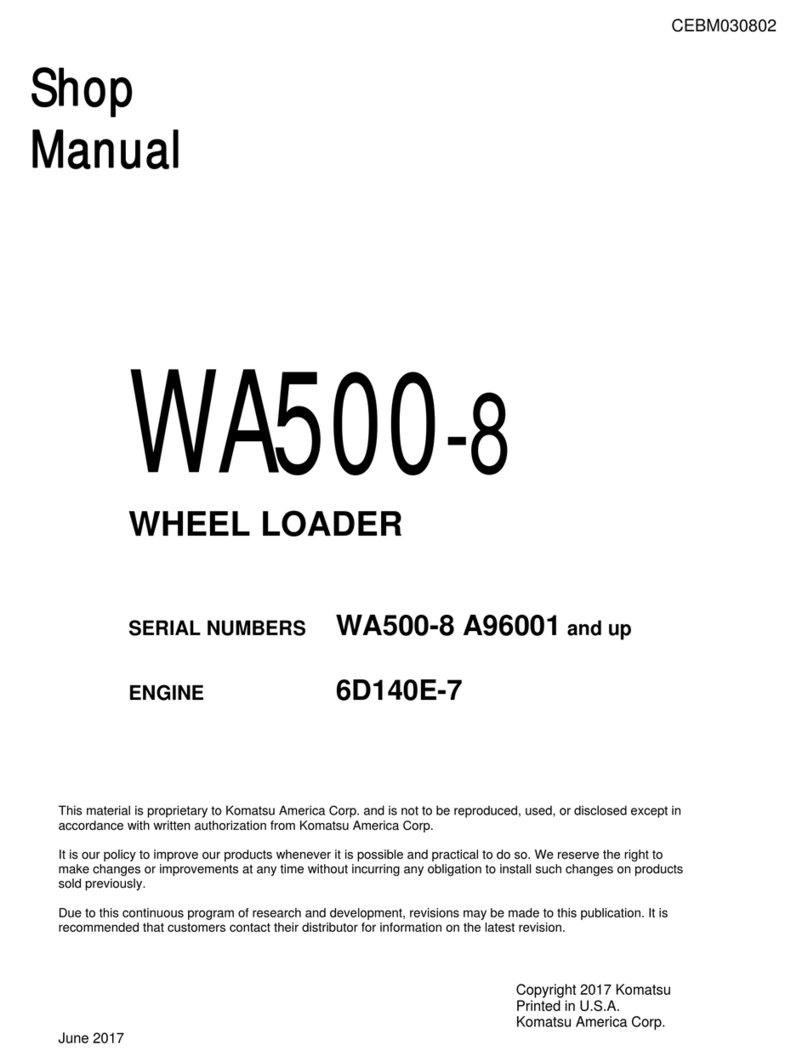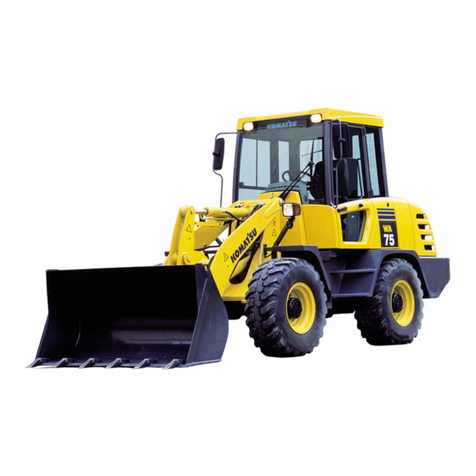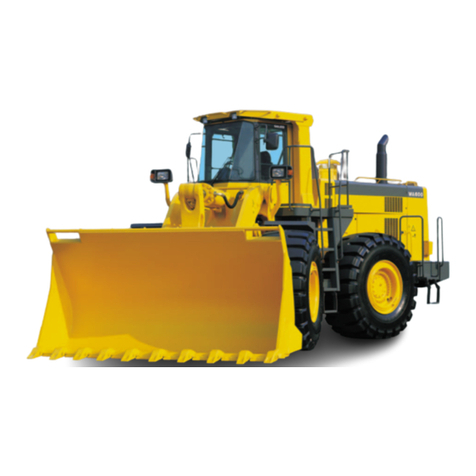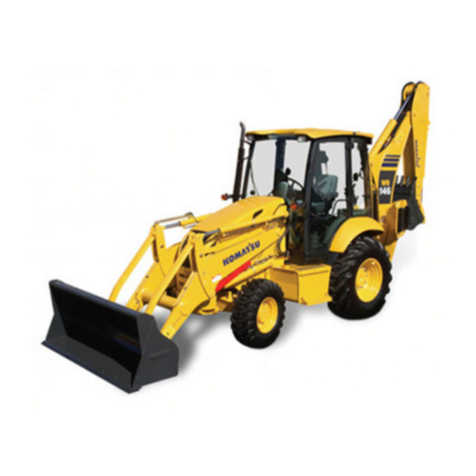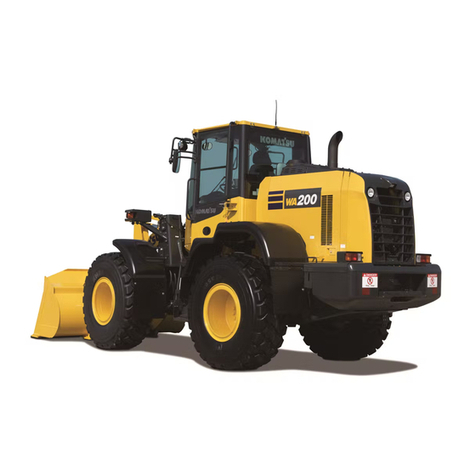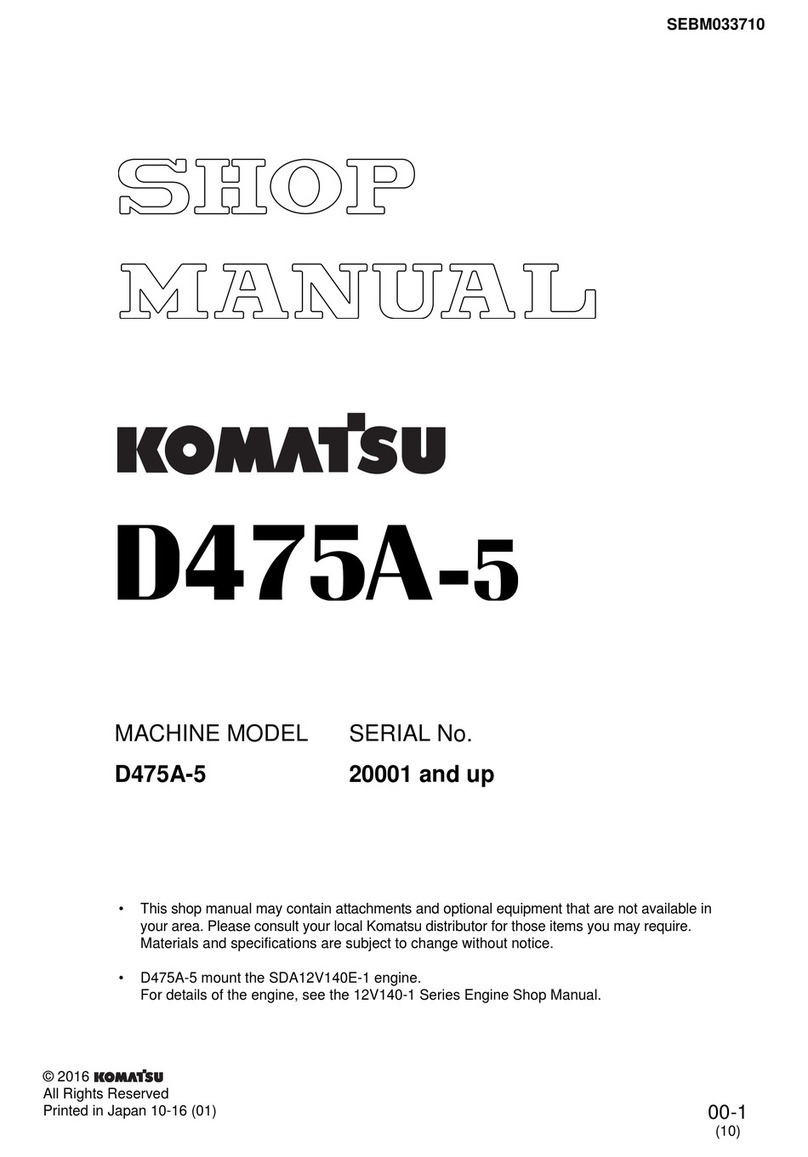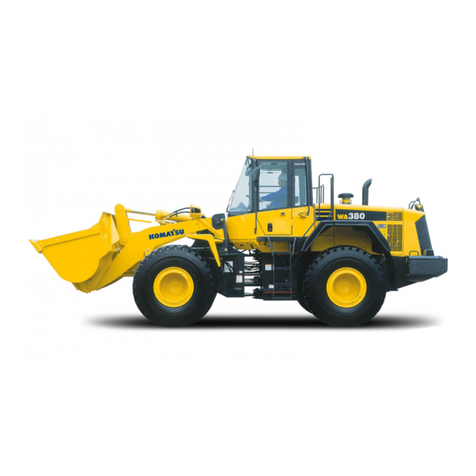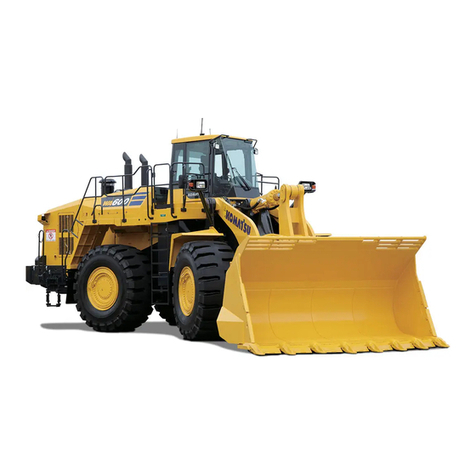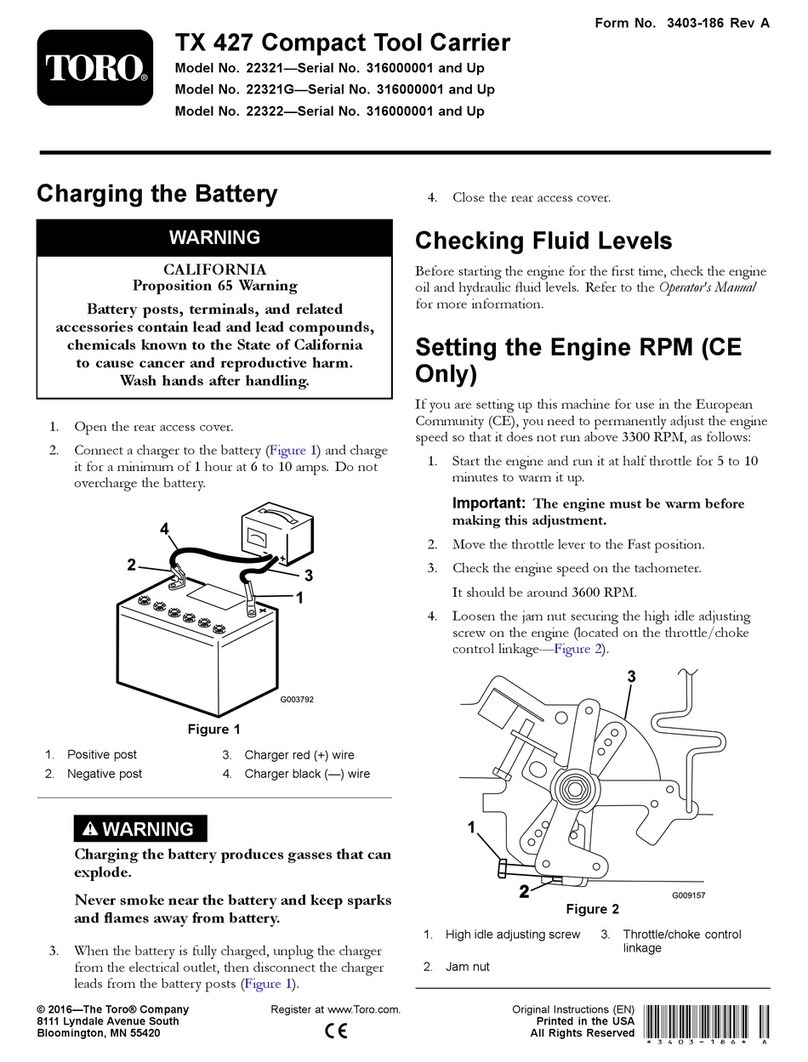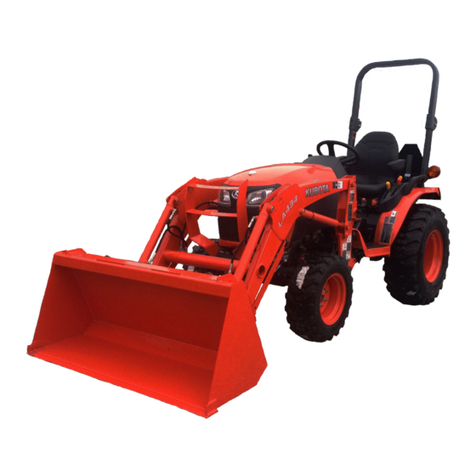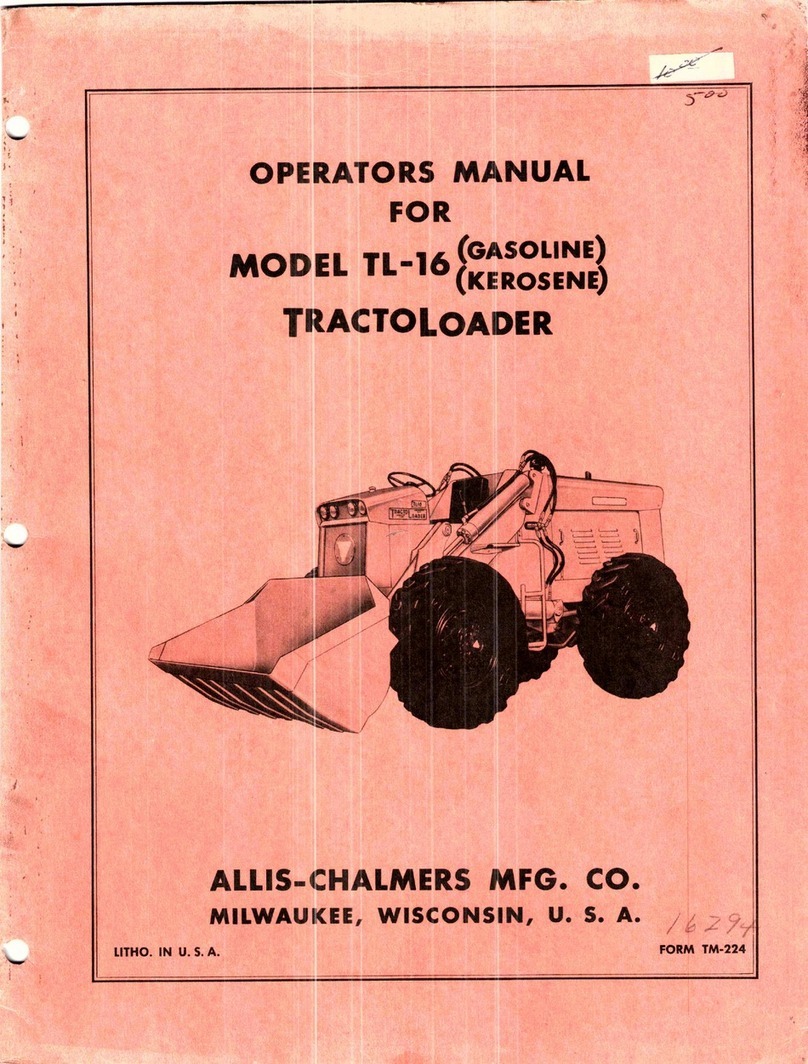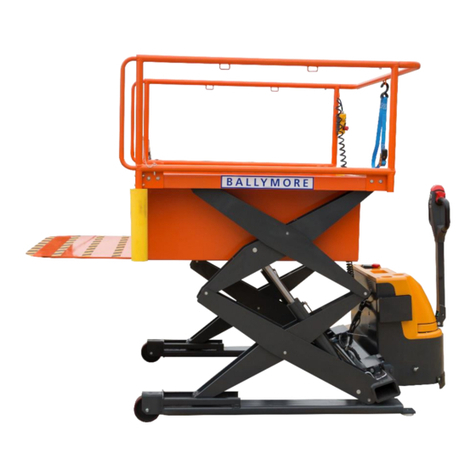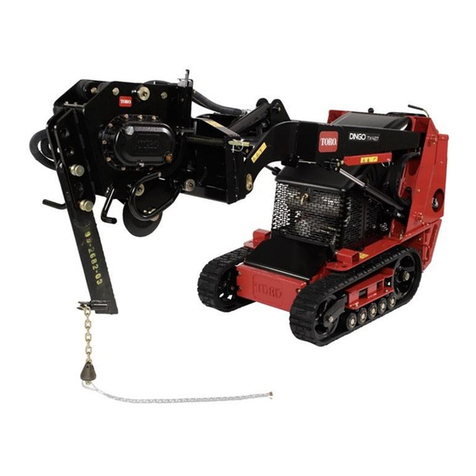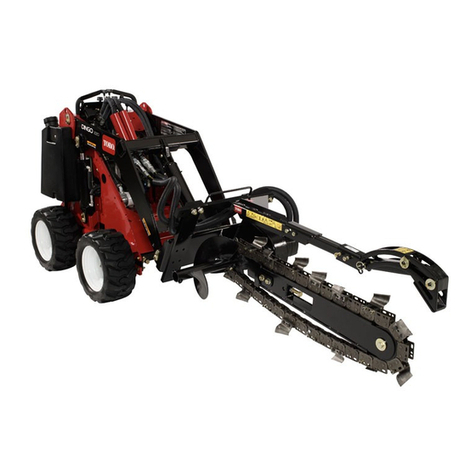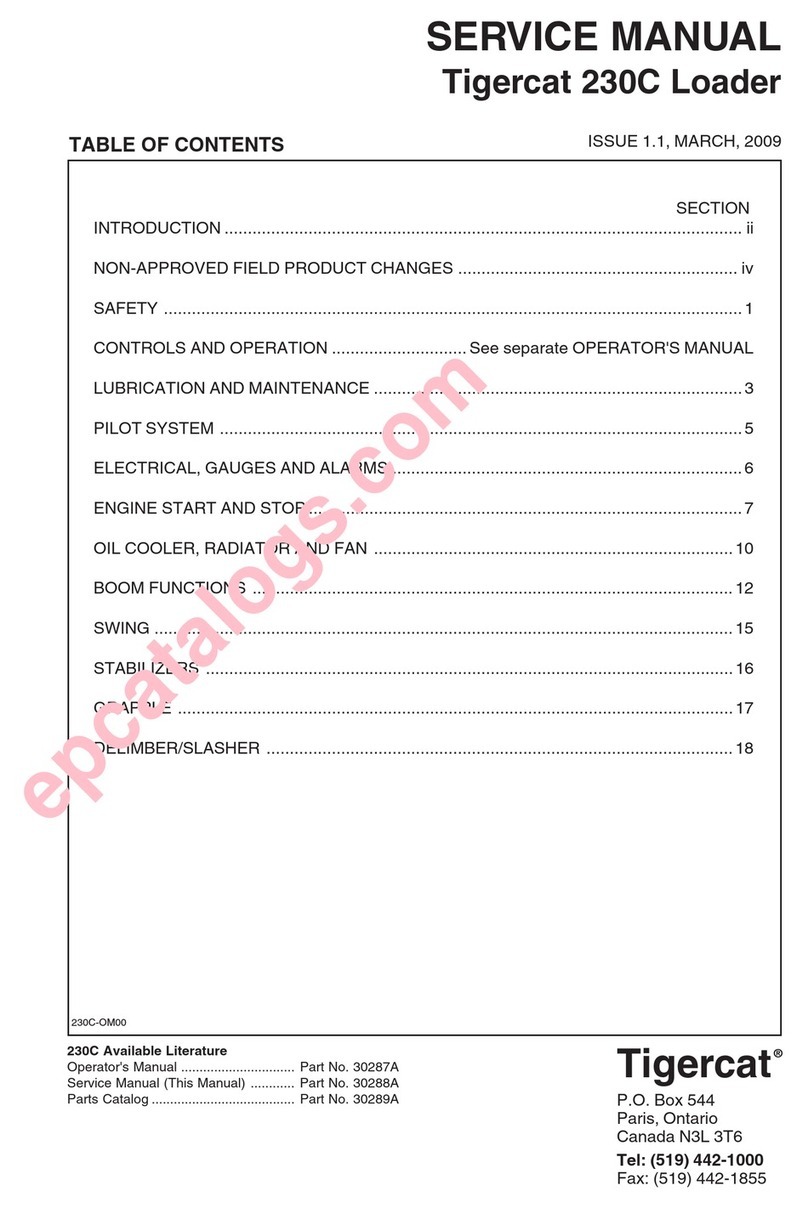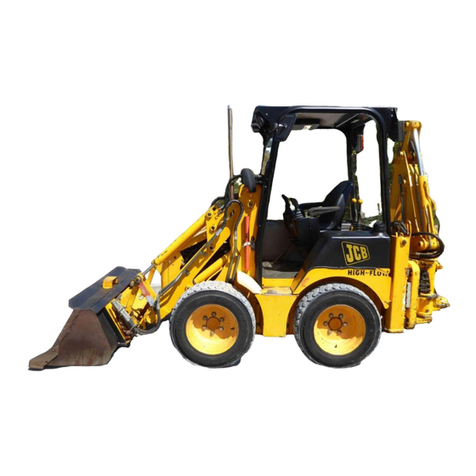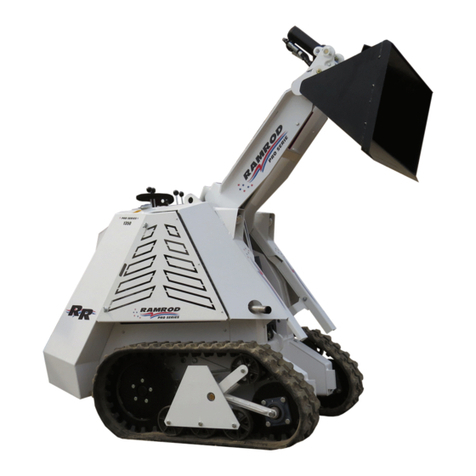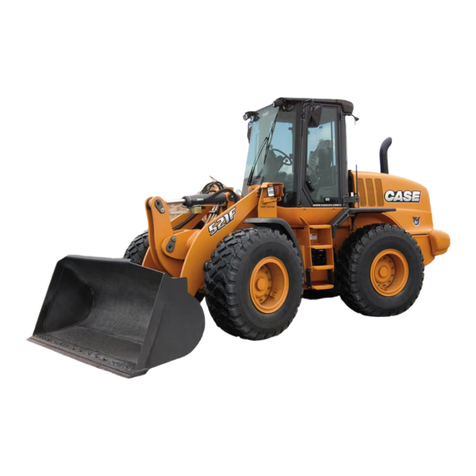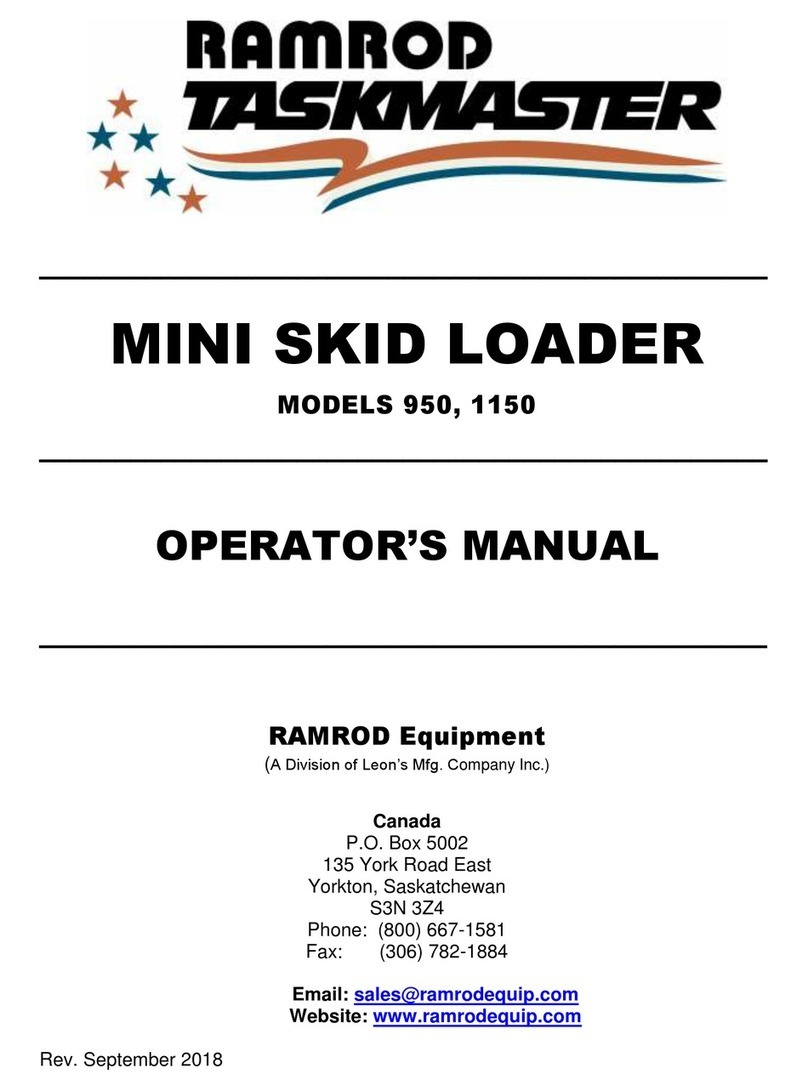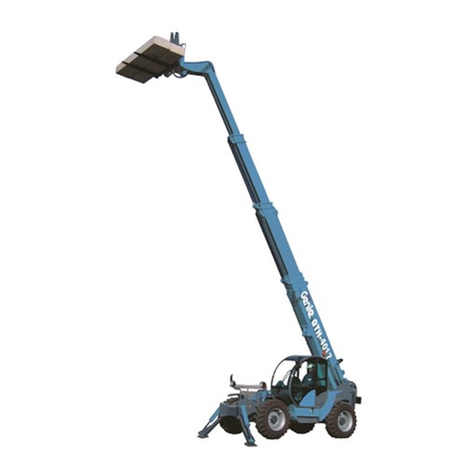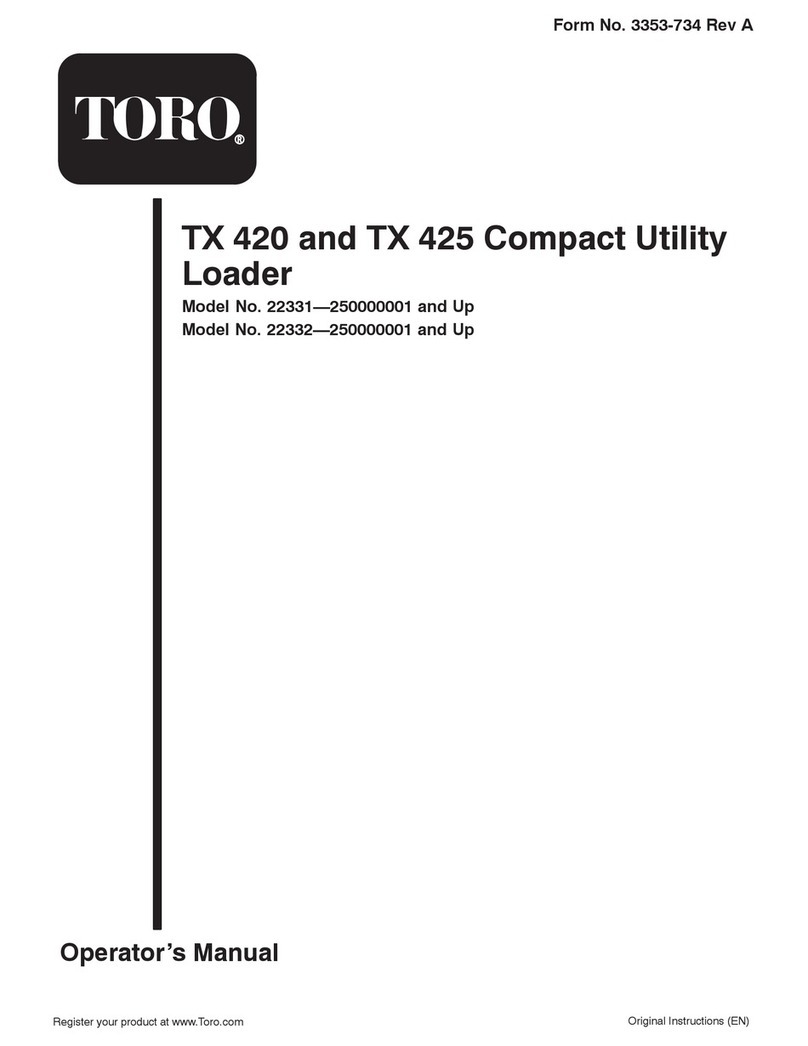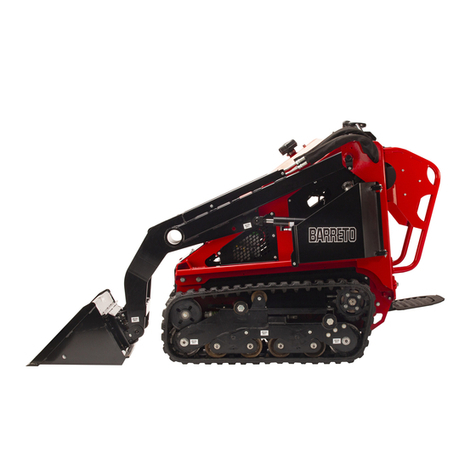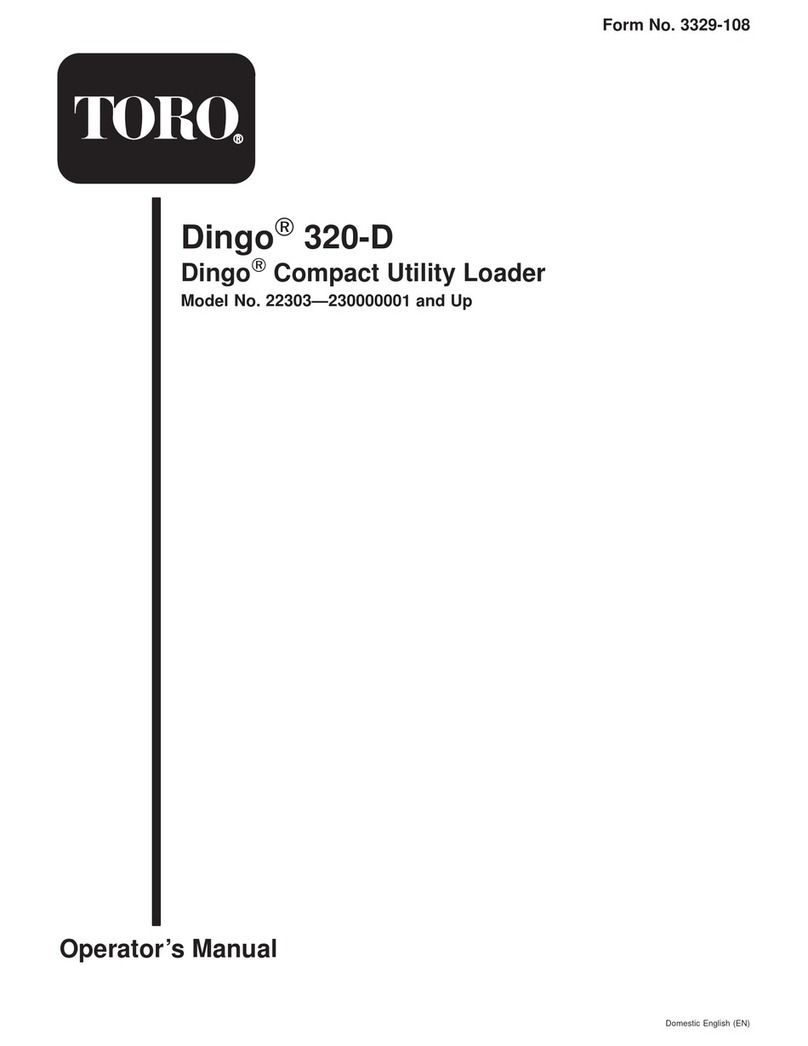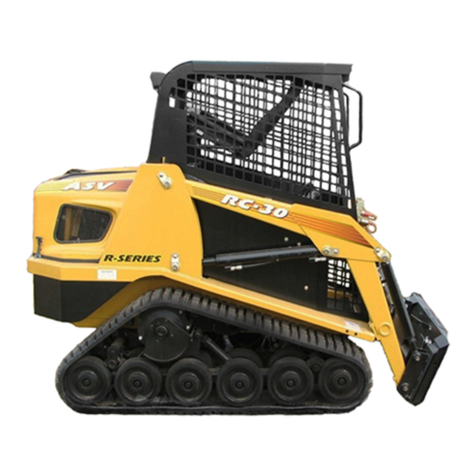
.
FOREWORD
SAFETY INFORMATION
Safety labels
Safety labels are affixed to the machine to inform the operator or maintenance worker on the spot when carrying out
operation or maintenance of the machine that may involve hazard.
This machine uses "Safety labels using words" and "Safety labels using pictograms" to indicate safety procedures.
Example of safety label using words
Safety labels using pictogram
Safety pictograms use a picture to express a level of hazardous
condition equivalent to the signal word. These safety pictograms
use pictures in order to let the operator or maintenance worker
understand the level and type of hazardous condition at all times.
Safety pictograms show the type of hazardous condition at the top
or left side, and the method of avoiding the hazardous condition at
the bottom or right side. In addition, the type of hazardous condition
is displayed inside a triangle and the method of avoiding the
hazardous condition is shown inside a circle.
Komatsu cannot predict every circumstance that might involve a potential hazard in operation and maintenance.
Therefore, the safety messages in this manual and on the machine may not include all possible safety precautions.
If any procedures or actions not specifically recommended or allowed in this manual are used, it is your responsibility
to take the necessary steps to ensure safety.
In no event should you engage in prohibited uses or actions described in this manual.
The explanations, values, and illustrations in this manual were prepared based on the latest information available
at that time. Continuing improvements in the design of this machine can lead to changes in detail which may not
be reflected in this manual. Consult Komatsu or your Komatsu distributor for the latest available information of your
machine or for questions regarding information in this manual.
The numbers in circles in the illustrations correspond to the numbers in ( ) in the text. (For example: 1J(1))
1 - 6
